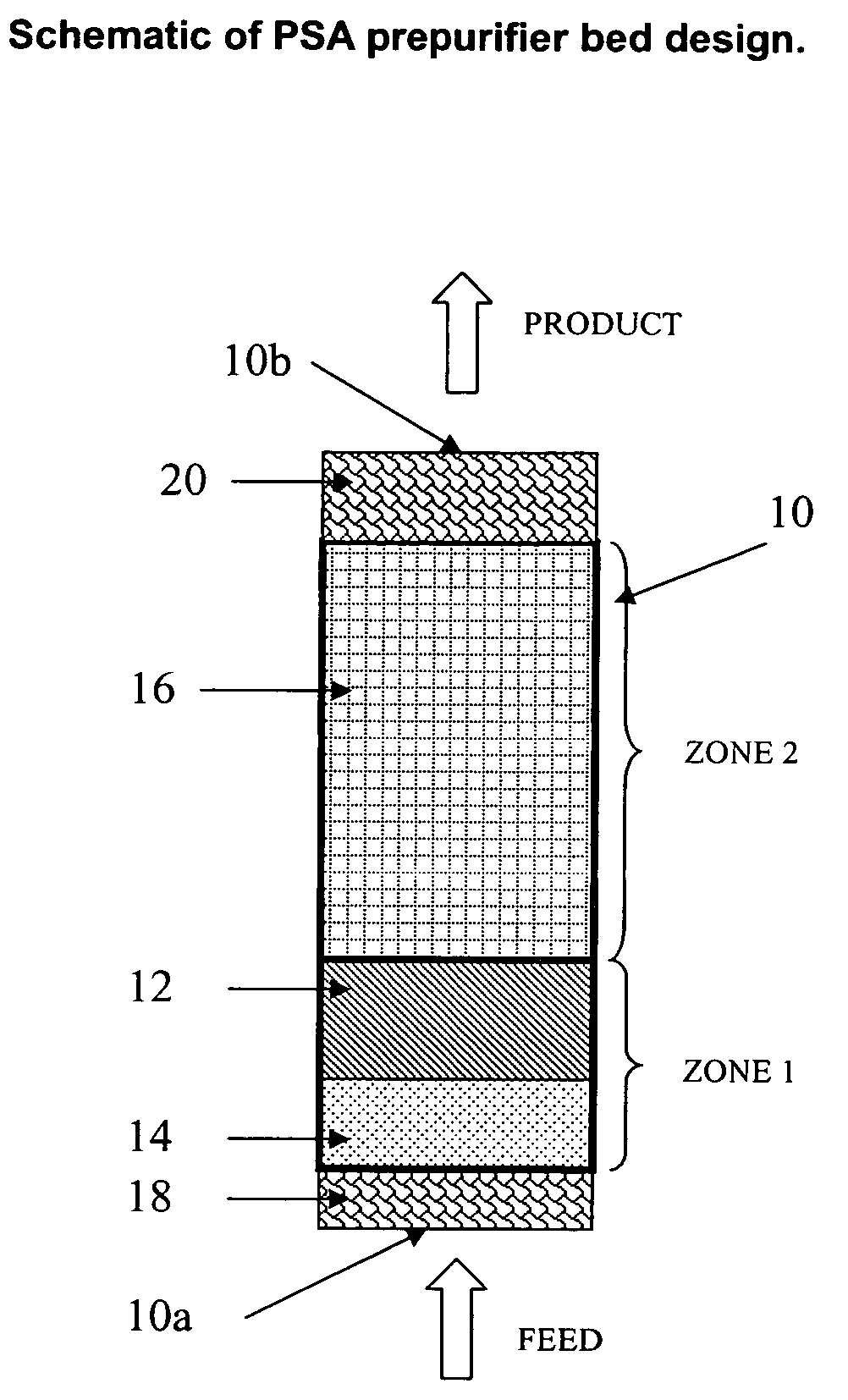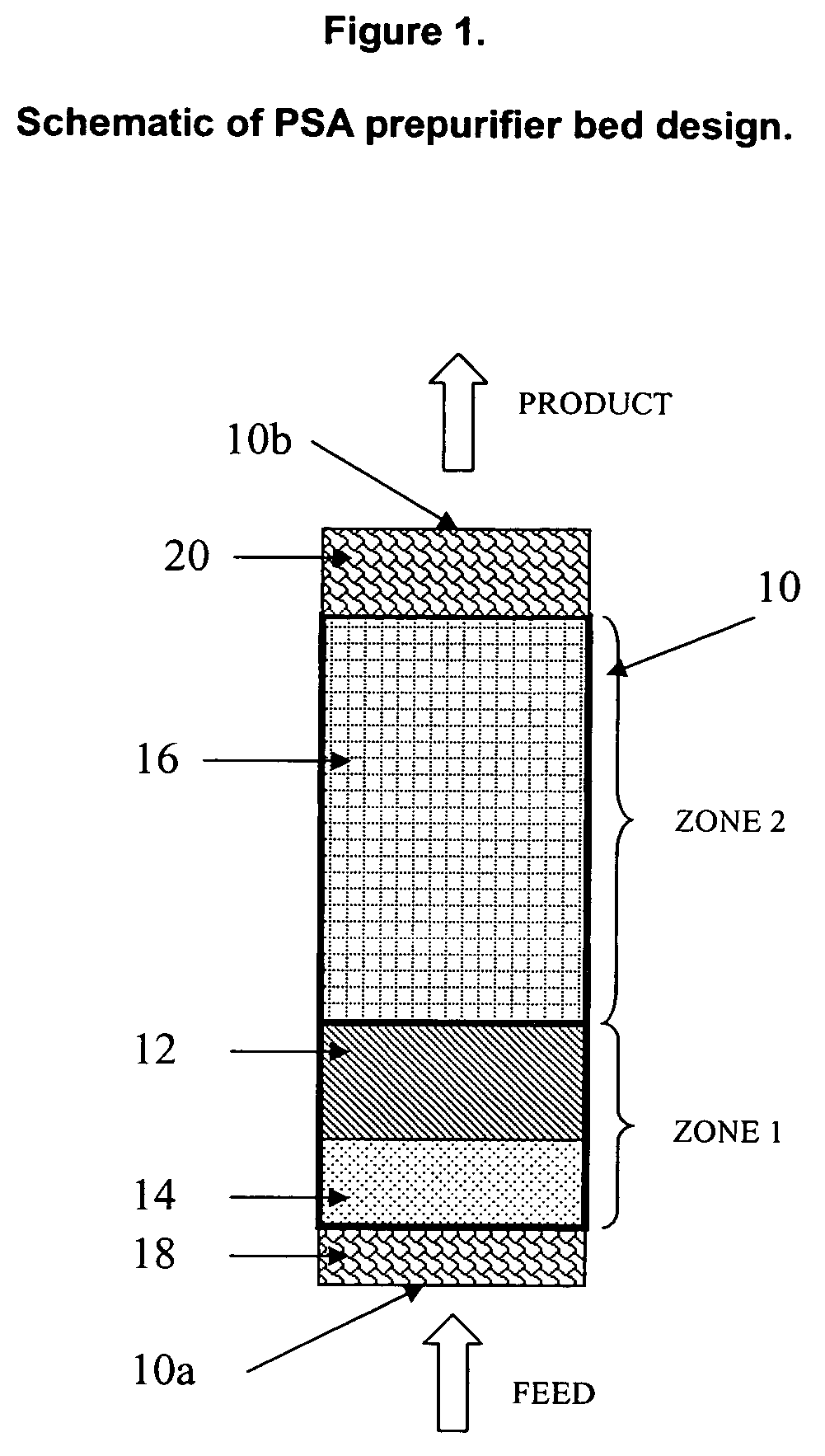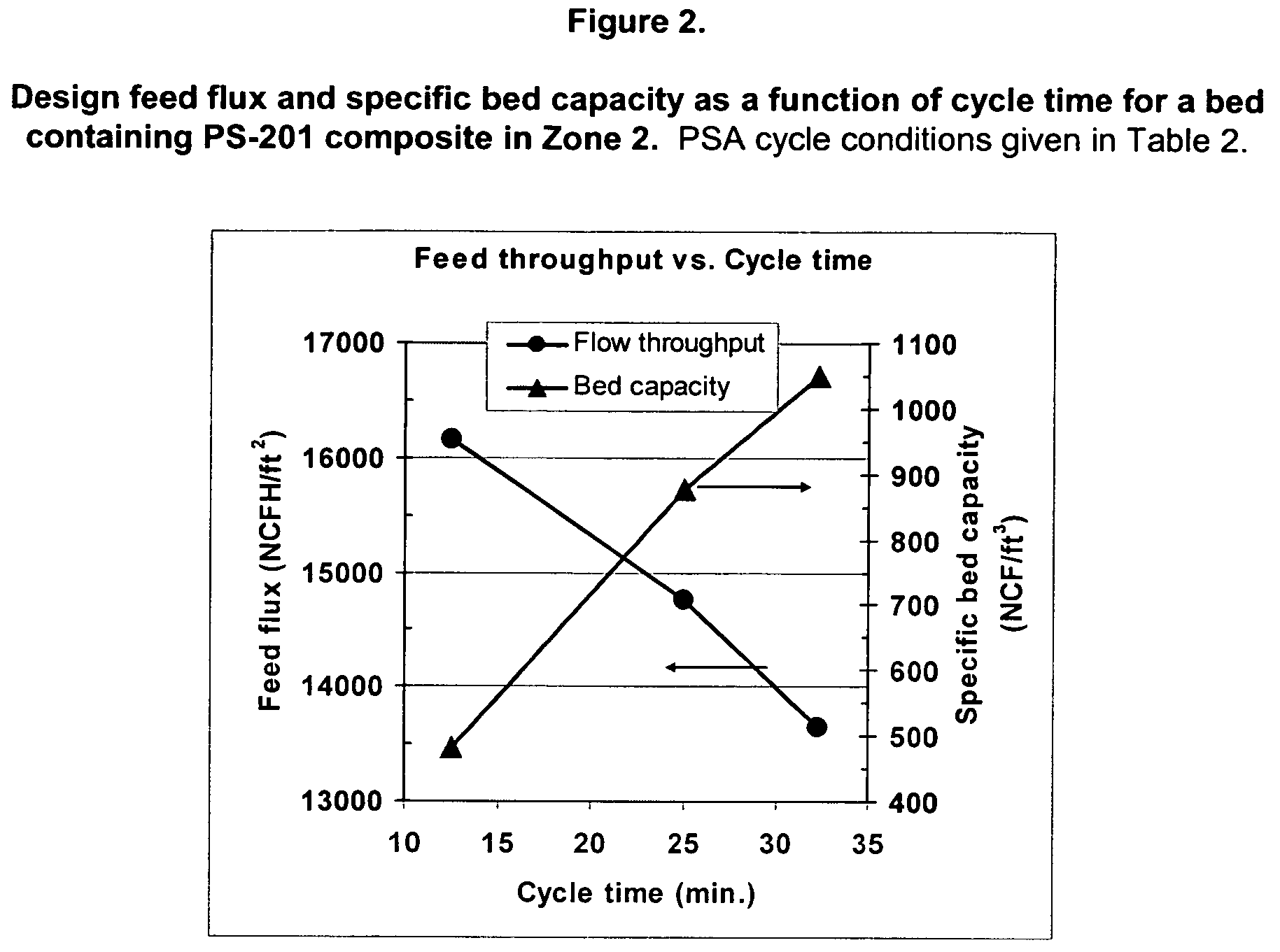Adsorbents for pressure swing adsorption systems and methods of use therefor
a technology of adsorbents and pressure swings, which is applied in the direction of separation processes, dispersed particle separation, chemistry apparatuses and processes, etc., can solve the problems of a relative large increase in the cycle time of psa, and achieve the reduction of blowdown loss frequency, reducing process operating costs, and maintaining product purity
- Summary
- Abstract
- Description
- Claims
- Application Information
AI Technical Summary
Benefits of technology
Problems solved by technology
Method used
Image
Examples
examples 1-2
[0061]Computer simulations were conducted by modeling a cylindrical vessel with an inner diameter of 3.26 inch and measuring 97 inches in length. The vessel contained the bed layer arrangement given in Table 1. Thus the first zone contained two activated alumina layers with the total bed height measuring 46.5 inches, while the second zone contained the composite layer measuring 37.5 inches in length. In other words, the volume of the first zone consisted of 55.4% of the sum of the volumes of the first and second zones.
[0062]
TABLE 1PSA bed adsorbent layer configuration used in Examples 1-5(in stacked order, starting from the feed end of bed).Layerheight (in.)Inert ball support (¼ in.)8Zone 1:F-200 (⅛ in.) alumina9D-201 (7 × 12) alumina37.5Zone 2:PS-201 (7 × 14) composite37.5Inert ball support (¼ in.)5Total length (in.)97% First zone (alumina) in bed55.4%
[0063]
TABLE 2PSA simulation of 25 minute and 32.5 minute cycle timeswith equal feed and purge flow rates.Example No.12Feed condition...
examples 3-5
[0065]Experiments were conducted in a pilot plant containing two beds measuring 4.26 in. inner diameter and containing a layering identical to that described in Table 1. The beds were subjected to PSA cycles with feed step time durations of 12.5 minutes, 25 minutes, and 32.3 minutes until cyclic steady state was reached in each case. In each case, the purge / feed flow rate ratio was maintained at 50% and the feed flow rate was adjusted so as to obtain a CO2 product impurity concentration of approximately 0.1 ppm. The detailed PSA cycle conditions are shown in Table 3. The design feed flux had to be decreased as the cycle time increased in order to limit the CO2 concentration in the product to the desired 0.1 ppm level.
[0066]The specific bed capacity to remove impurities from air in each cycle was calculated for the different cycle times using Equation (1) given previously and is also shown in Table 3. It was found that the specific bed capacity increased as the cycle time was increas...
example 6
[0069]A pilot plant test was conducted in a pilot plant with 3.26 in. inner diameter with a bed layer arrangement shown in Table 4 and PSA conditions and cycle time given in Table 5. In this Example, the Zone 2 consisted of 37.5 in. layer of a mixed adsorbent composed of 36% 13×APG zeolite (8×12) and 64% D-201 alumina (7×12). The pilot plant was subjected to PSA cycles with a feed time of 32.3 minutes for several days until cyclic steady state was reached. Simultaneously the feed flow-rate was adjusted keeping the purge / feed flow ratio constant at 50% such that the product CO2 impurity concentration attained was about 0.1 ppm. The corresponding design feed flux obtained was 14,060 NCFH / ft2 which is within 3% of that obtained using the PS-201 composite in Example 5 (13,639 NCFH / ft2). Thus, the mixture of 13×APG zeolite and D-201 alumina in the second zone of this Example provides comparable performance to that containing the PS-201 in Example 5.
[0070]
TABLE 4PSA bed adsorbent layer co...
PUM
| Property | Measurement | Unit |
|---|---|---|
| cycle time | aaaaa | aaaaa |
| weight percent | aaaaa | aaaaa |
| pressure | aaaaa | aaaaa |
Abstract
Description
Claims
Application Information
 Login to View More
Login to View More - R&D
- Intellectual Property
- Life Sciences
- Materials
- Tech Scout
- Unparalleled Data Quality
- Higher Quality Content
- 60% Fewer Hallucinations
Browse by: Latest US Patents, China's latest patents, Technical Efficacy Thesaurus, Application Domain, Technology Topic, Popular Technical Reports.
© 2025 PatSnap. All rights reserved.Legal|Privacy policy|Modern Slavery Act Transparency Statement|Sitemap|About US| Contact US: help@patsnap.com



